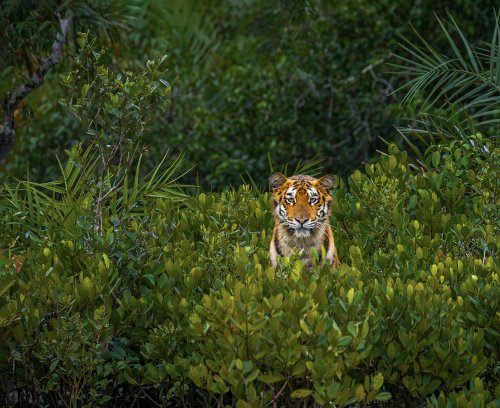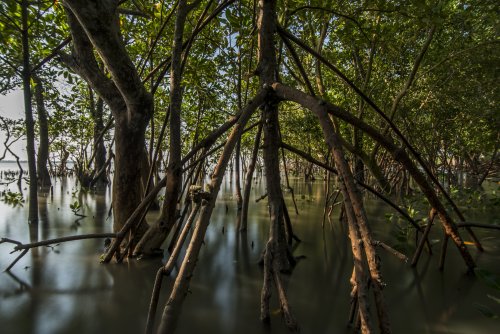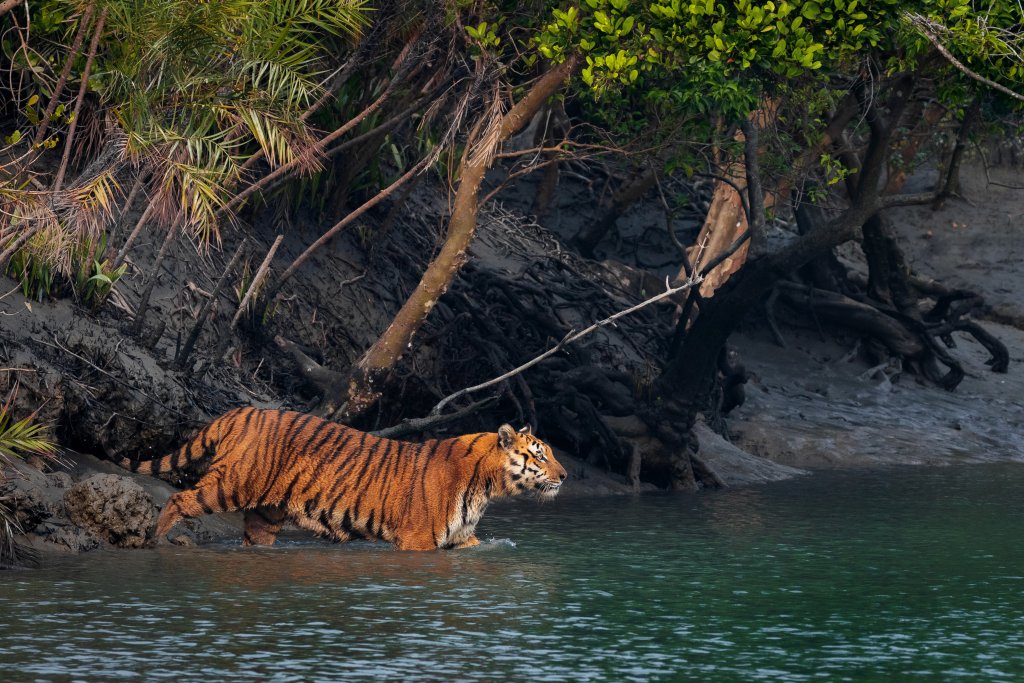
The Wonder of Mangroves
Last Updated: May 2025
Written by: Dr. Laura Michie
The wonder of mangroves
Next month, I’ll be heading to the 2025 UN Ocean Conference in Nice, France – an event that gathers scientists, policymakers, Indigenous leaders, conservationists, and storytellers from around the world to shape the future of our oceans.
This year’s theme, “Wonder: Sustaining what sustains us”, feels especially relevant because awe and curiosity are so often what fuel our scientific interest in these ecosystems. In the face of an escalating climate crisis, it’s a timely call to reconnect with the natural world, to recognize its value, and the responsibility we share in protecting it.
For me, few ecosystems evoke that feeling as much as mangrove forests.
Mangroves: nature’s coastal guardians
Mangroves are among the most extraordinary ecosystems on Earth. Found along tropical coastlines, these forests are carbon powerhouses, biodiversity hotspots, and natural storm barriers that protect millions of lives. They stabilize shorelines, nurture fisheries, and play a vital role in global climate regulation – storing up to five times more carbon per hectare than tropical rainforests.
Yet despite their value, mangroves are often overlooked. Half of all the world’s mangrove forests are at risk of collapse and protecting them requires not just policies and technical knowledge, but also a shift in mindset – one that recognizes their beauty, importance, and connection with coastal communities.
This is where storytelling becomes a powerful tool for change. Science gives us the data we need to understand mangroves. But it is wonder that inspires people to take action. Whether it’s a child exploring in the mud or a policymaker seeing a mangrove forest for the first time, wonder invites us to care. It reminds us that mangroves are not just carbon sinks or coastal buffers – they are living, breathing ecosystems, home to so many stories. And there’s still so much more to learn. Each new discovery – from how mangroves filter salt to how their roots store carbon and support fisheries – deepens our wonder at their resilience and vital role in coastal life.

Imagery as a catalyst for connection
At Mangrove Action Project (MAP), we’ve seen how photography can open hearts and minds through our Mangrove Photography Awards. Every year, photographers from around the world share their beautiful, intimate, and powerful images of mangrove life – from intricate root systems teeming with life, to fishermen casting nets at golden hour.
In the face of rising seas, deforestation, and climate loss, visual storytelling gives us a reason to connect and to care. They provide the human context to scientific work and bring mangrove conservation and restoration closer to the public imagination.

Bringing mangroves to UNOC
At MAP I am lucky enough to work with communities, governments and restoration practitioners all over the world, and as I prepare to join international colleagues at the UN Ocean Conference, I bring with me the stories of those who live and work with mangroves every day. From community-led restoration efforts to groundbreaking science, the global mangrove movement is growing stronger, more inclusive, and more connected.
Mangroves have long sustained coastlines and coastal people. Now it’s our turn to return the favor – with policy, with funding, with research, and with wonder.

Feature Image Credits:
Mangroves, Orpheus Island, Australia
Credit: Matt Curnock / Ocean Image Bank
- Read more about Why Mangroves Are Vital for Global BiodiversityBlog
Why Mangroves Are Vital for Global Biodiversity
Last Updated: November 2024 Written by: Dr. Laura Michie Despite disappointing outcomes at COP16, which left significant gaps in commitments…

